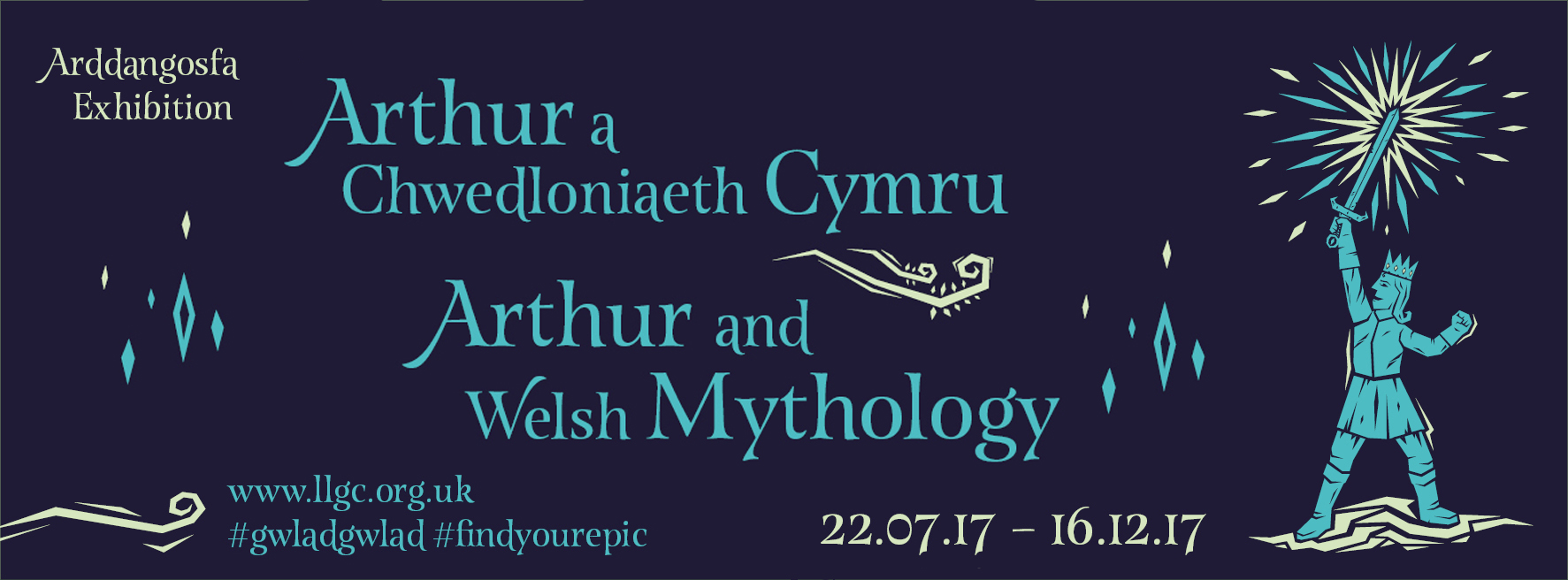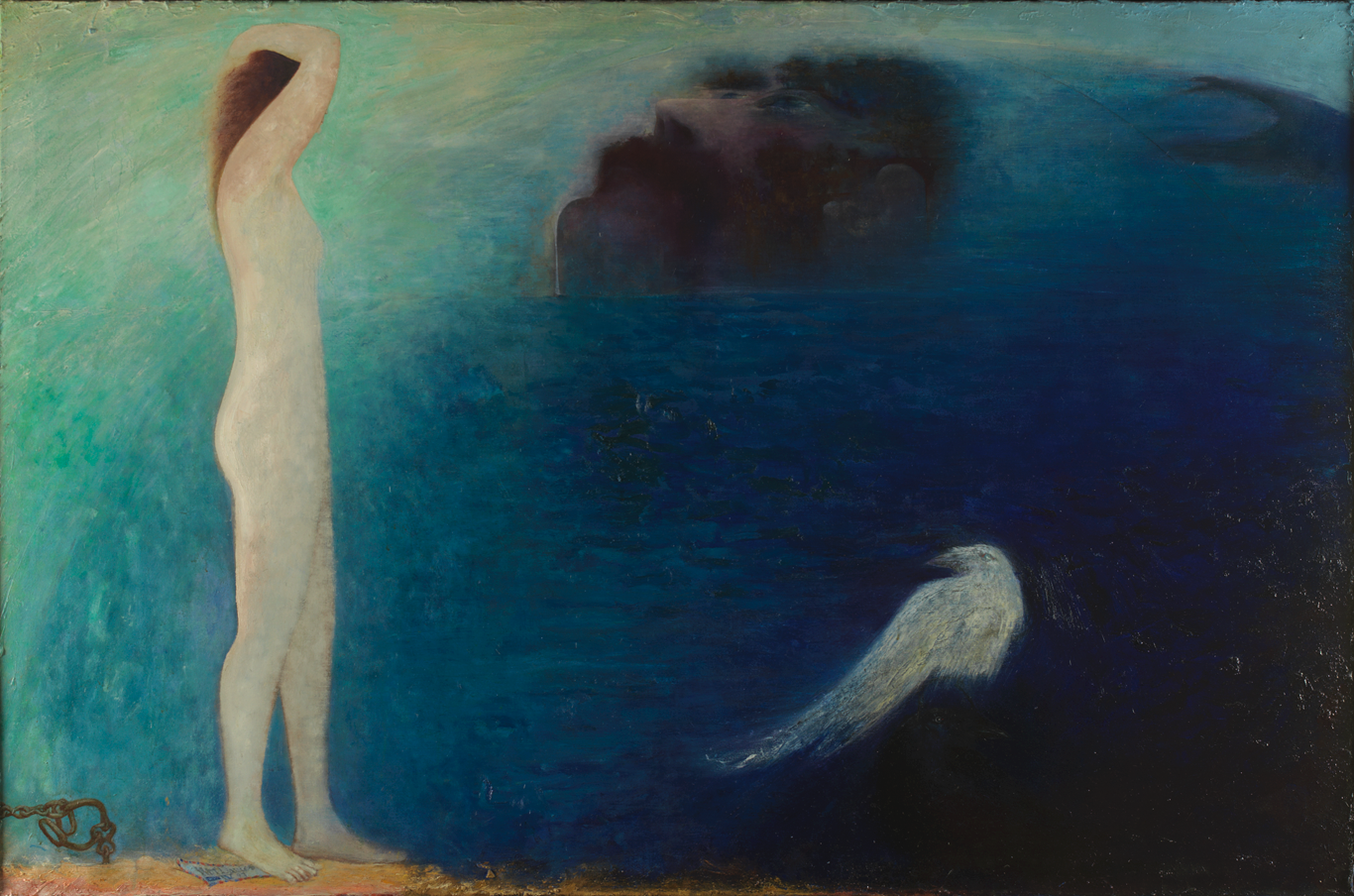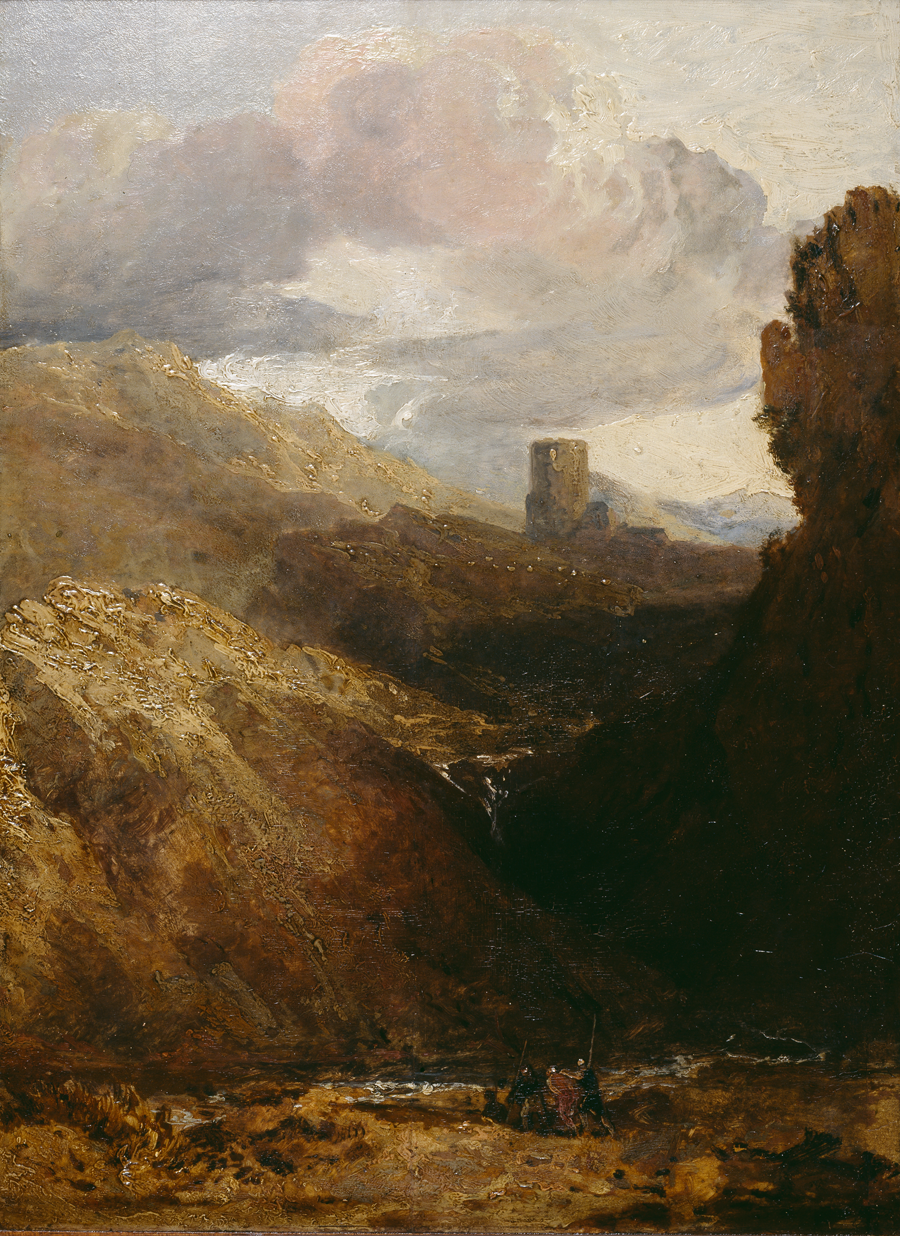
2017 is the ‘Year of Legends’ in Wales, with everyone from national institutions to tourist attractions celebrating the wealth of the myths and legends all around us. The National Library of Wales are joining in the celebrations with an exhibition of epic proportions; rediscovering the magic of the Mabinogi and searching for Arthur…
Return of the King!
King Arthur is arguably Wales’ most successful international export. The National Library of Wales has long been a thriving centre for Arthurian studies, based on its unrivalled collections of original materials dating back to the Middle Ages. From the enigmatic warrior’s earliest appearances in Welsh literature to his kingly ‘conquests’ on a European stage by means of Geoffrey of Monmouth’s twelfth-century History of the Kings of Britain, the Arthur and Welsh Mythology exhibition shows us how a character of humble origins captured the imaginations of a continent, and became the most famous of all kings. We take a look at Arthur’s last and greatest battle; fighting against Mordred at Camlan may well have presented a challenge, but the defence of Arthur’s very existence against mounting scepticism by historians of the Tudor period was a very different struggle.

The Magic of the Mabinogion
It is believed that the legends of the Mabinogion are some of the earliest Welsh stories in existence. They were preserved in writing during the twelfth and thirteenth centuries in manuscripts such as The White Book of Rhydderch and The Red Book of Hergest. The eleven ancient stories took place in an enchanted landscape of magic and mystery, of fantastic creatures and strange spirits that seem very distant from our lives today. Yet within these tales are characters whose struggles with themes of fall and redemption, loyalty and betrayal, and love and loathing make them alive and familiar to their modern audience.
A vital chapter in the story of the Mabinogion features a major figure in the history of Welsh literature, Lady Charlotte Guest. Despite living centuries after these tales were first set down, her pioneering translation of the medieval texts brought them to public attention for the first time in modern print format. Her work was published in seven volumes between 1838 and 1845, presenting Tegid’s transcribed Welsh text alongside her own English translation and copious scholarly footnotes, full illustrations, and fine bindings. Thanks to her incredible dedication and work, the Mabinogion are now known throughout Wales and the world.

The Legendary Landscapes of Wales
Although many of the Welsh legends are tied up in magic and fantasy, their connection to real locations in the Welsh landscape continue to inspire artists throughout the ages. Nearly every stone, lake, castle and mountain in Wales has a tangible link to an ancient legend surrounding it, allowing us to reach back and touch something of the mystery of our past even today. We can hear on beaches the bells of a lost kingdom beneath the waves, or see in our mountains the seats of giants long since gone…
Looking out from a mountain top in Wales, it is easy to imagine giants, dragons, armies and war, and the spirit of mystery and enchantment in the forests too. From Cader Idris (seat of the Giant Idris) to Beddgelert (The grave of Prince Llywelyn’s faithful hound) we see evidence of legends in place names throughout Wales. The landscape is central to our history, our fiction, and the legends that exist between them.
Water plays an essential role in Welsh mythology. It is home to mystical creatures and a dangerous force capable of destroying whole lands. It acts as a gateway to the Otherworld and conceals deities and the dead. The melodic sound of waterfalls and waves that can be heard throughout our landscape is reflected in our language; in the spoken word and in the poetry which keeps our legends alive. Along Wales’ coastline, on her islands, and throughout her rivers and lakes, ancient legends lurk beneath the surface and maybe something sinister waits below.
Often called the ‘castle capital of the world’, Wales has more castles per square mile than any other country on Earth. The historical stories and magical tales that are so closely entwined with these buildings tell of princes, treasure, fairies, and ghosts, all brought to life by the work of prominent artists who have endeavoured to capture them over the years. Something of the enduring solidity of stone has passed into the fabric of Welsh culture. The landscape is scattered with Neolithic tombs and standing stones, serving as reminders of tribes long since disbanded. The language and literature itself stands in defiance, and even the cornerstone of Welsh traditional culture in our modern age, the Eisteddfod, has at its heart the strange paganism of a ceremonial stone circle and robes…

The Oral Tradition
Over a thousand years since these legends were first recited, as a modern audience we’re indebted to the oral tradition of storytelling in Wales. Through the narrative of the cyfarwydd (storyteller), as well as the ‘ordinary folk’, much of our culture has been preserved in the form of traditional prose, local myths, supernatural tales, humorous stories and poetry. Reciting stories isn’t the only way our legends and tales have been shared over the centuries; but also through song. It was the harpists, balladeers and fiddle players who secured the continuation of folk singing in the early ages through travelling the country entertaining the people in markets and public houses, transferring the music and the legends and stories associated with them from one world to another.
Thankfully, these oral traditions continue to this day – in pubs, schoolyards, rugby matches, and kitchens across Wales, as well as through the work of People’s Collection Wales. People’s Collection Wales provide services and a website for you to share your memories of Wales; through sound recordings as well as videos, photographs, documents, and stories.
From medieval manuscripts to contemporary art and audio visual material, join us in our celebration of Welsh myths and legends. The Arthur and Welsh Mythology exhibition can be seen in the Hengwrt and Gregynog Galleries at The National Library of Wales, Aberystwyth, until 16 December 2017.
